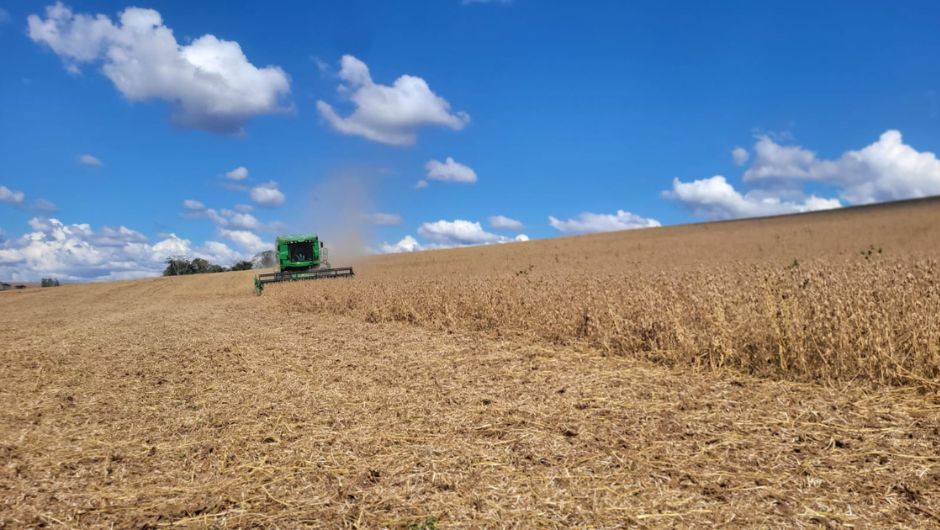Crop diversification grows in Mato Grosso do Sul
Products such as peanuts, cassava, rice, beans and cotton gain space in crops and expand the food basket produced within the State

The drier climatic conditions of recent periods allowed the increase in the soybean harvest in Rio Grande do Sul, which increased from 38% to 49% of the total cultivated in the 2023/2024 harvest, which is 6.681.716 hectares, with grains with humidity close to ideal. According to the Conjunctural Information, released today by Emater/RS, linked to the State Secretariat for Rural Development (SDR), the harvest advanced more significantly in the North and West regions of the State, where 70% were harvested; In the South and East, the average rate reaches 30%.
There remain considerable areas of soybean crops to be harvested, especially in the southern half of the state, where the oilseed cycle has ended. If excess moisture continues, these grains will be susceptible to post-ripening losses, such as rot, fungal infestation, premature germination and threshing caused by the oscillation between drying and moistening the pods. In addition to a possible negative impact on productivity, there are risks related to the mechanized harvesting operation in excessively humid terrain, as well as logistical difficulties in transporting grains to storage and commercialization points, given the precarious traffic conditions on secondary roads, which present clay accumulation.
Productivity varies, but, for the most part, continues to exceed initial expectations. This considerable variability is attributed, among other factors, to the rainfall occurring during the reproductive cycle. A significant reduction in this index was observed in the Southeast of the State and, to a lesser extent, in the Northwest; In other regions, the volume of rain was sufficient. The intensity of disease infestation at the end of the cycle also impacted these results. The estimated average productivity for the State is 3.339 kg/ha.
In relation to phytosanitary management, spraying with fungicides continued, taking advantage of the brief favorable weather windows, in crops with a longer cycle, sown at the end of January. These applications aimed to protect crops against Asian rust and other diseases until the end of the cycle, scheduled for the end of April.
Corn – harvesting, receiving grains for processing and storage operations remain suspended, focused on soybean cultivation. Rainfall and the consequent high humidity in most of the state also made operations unfeasible during the period. Due to the factors mentioned, the increase in the harvested area for corn cultivation was only 1% in relation to the previous period, reaching 78%, with 16% of the areas still in maturation, 5% in grain filling and 1% of the Corn crops are in bloom. The cultivation area is estimated at 812.795 hectares, and current productivity at 6.464 kg/ha.
Corn silage - harvesting and silage were hampered by the recurrence of rain, which made field activities difficult and even prevented. Even in the early days of the period, when it did not rain, the predominance of fog at dawn and cloudy days did not allow for adequate reduction of humidity from precipitation in the previous period. Despite these conditions, operations are approaching completion, and projected productivity remains at 35.518 kg/ha.
During the transition period from summer to winter forage, a scenario of low production of green forage is observed, creating a "forage void", as it is popularly known. This phenomenon is worsened by the delay in sowing winter forage, caused by the delay in harvesting soybeans and the high humidity conditions in the soil.
Despite this situation, areas sown with winter forages demonstrate satisfactory emergence and rapid initial development. Due to good weather conditions, the native grassland is still providing adequate amounts of forage for the animals.

Receive the latest agriculture news by email